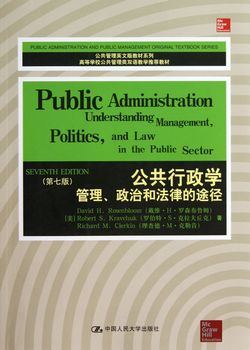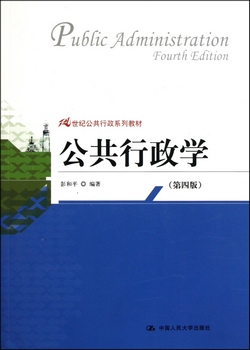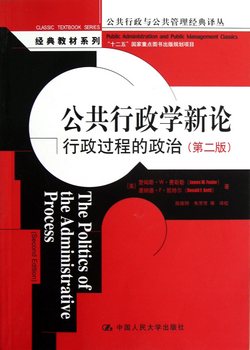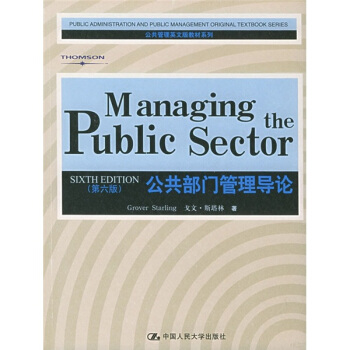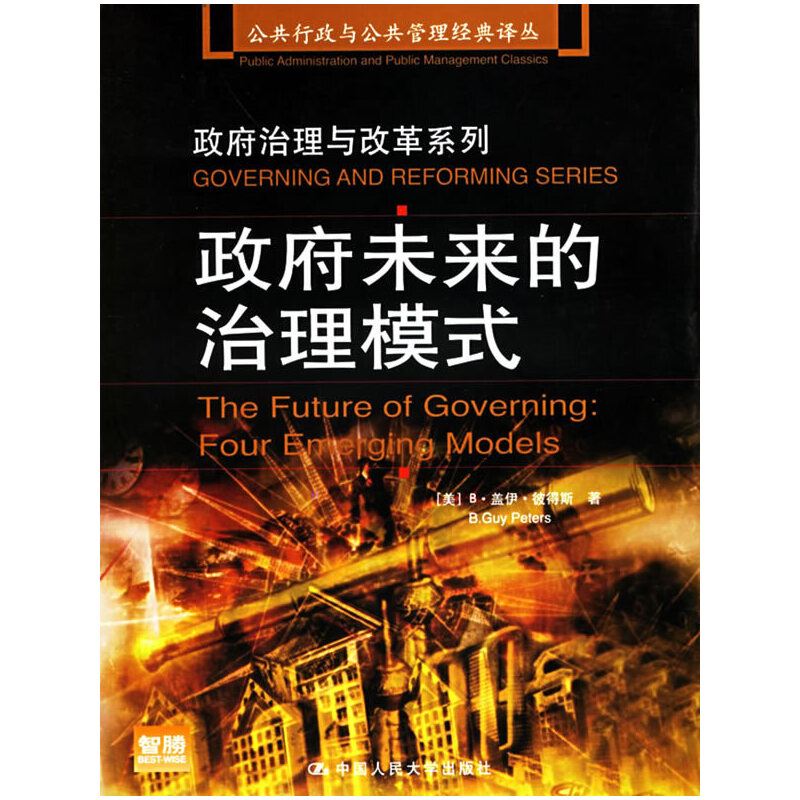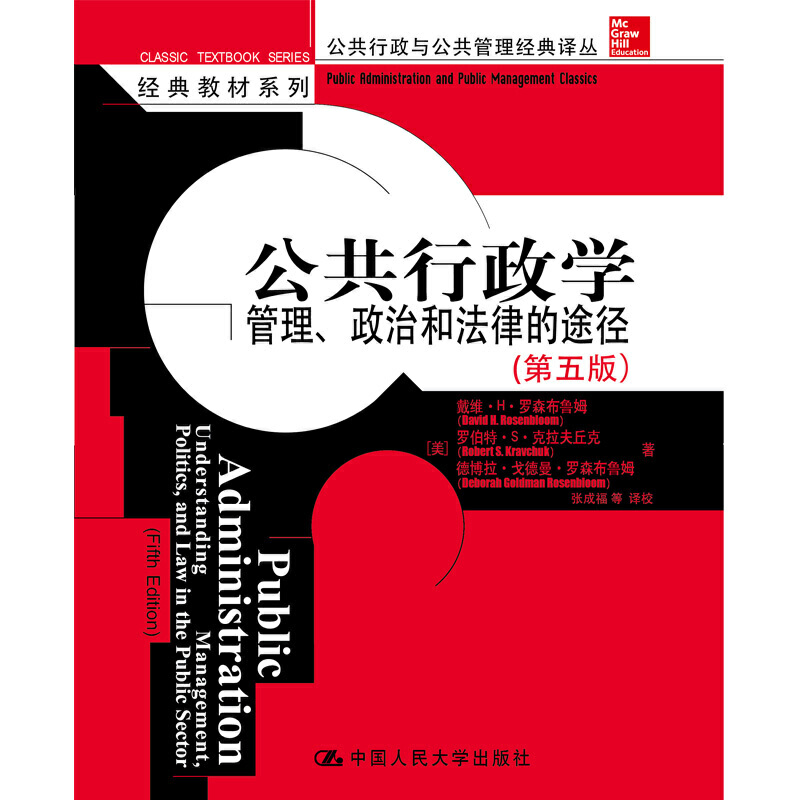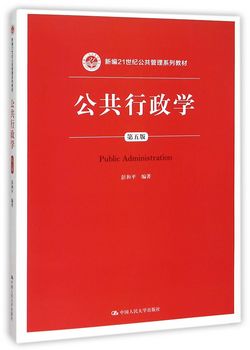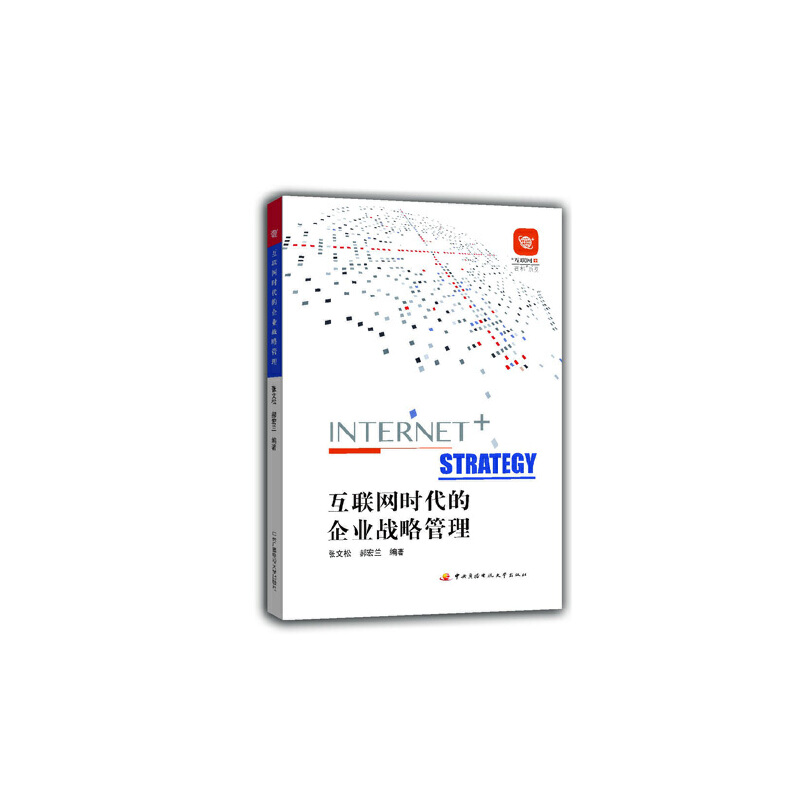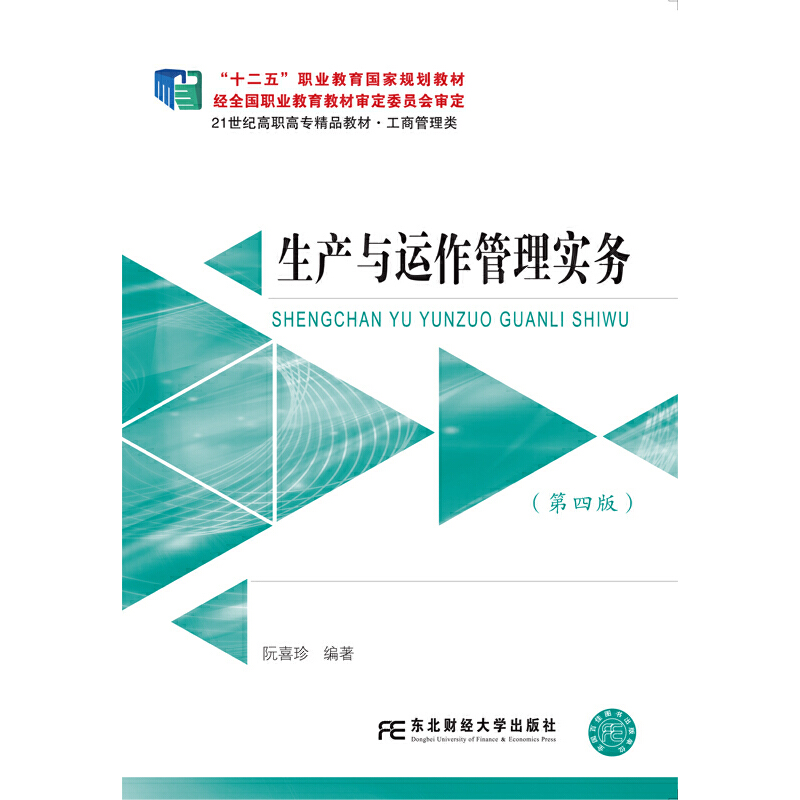公共行政学:管理、政治和法律的途径(第七版) / 公共管理英文版教材系列
作者: [美]戴维·H·罗森布鲁姆等
出版时间:2013-10
出版社:中国人民大学出版社
- 中国人民大学出版社
- 9787300178974
- 74434
- 41158500-3
- 16开
- 2013-10
- 654
- D035
- 公共管理类
- 本科 研究生(硕士、EMBA、MBA、MPA、博士)
《公共行政学:管理、政治和法律的途径(第7版)/高等学校公共管理类双语教学推荐教材》是公共行政学经典教材,广泛应用于包括美国、中国、格鲁吉亚、乌克兰、意大利、葡萄牙、韩国、伊朗、以色列和中国香港等在内的国家和地区的众多著名高校。全书从管理、政治和法律的途径描述、阐述和分析公共行政,给读者提供了一种深刻、全面理解公共行政的分析框架,并深入分析了美国政府在组织设计、人力资源管理、预算、决策与执行等领域的各种行政实践背后的基础理念,解释了管制行政的运作,分析了公共行政与民主宪政之间的关系,探讨了行政责任与伦理问题,并对公共行政的未来进行了展望。本书第七版反映了美国政府自“9?11”事件以来的诸多变化,如卡特里娜飓风、反恐战争等重大事件带来的行政挑战及其影响,政府与公众之间关系的变化,等等。
《公共行政学:管理、政治和法律的途径(第7版)/高等学校公共管理类双语教学推荐教材》可作为高校行政管理、公共管理硕士(MPA)及相关专业行政管理学、公共行政学、公共管理学等课程的双语教学教材。本书配有中文翻译版。
第1章 公共行政的学科与实务的意涵:不同观点下的思考
1.1 公共行政的定义
1.2 强调公共行政之公共性
1.3 管制与服务
1.4 公共行政研究之管理、政治与法律途径
1.5 结论:公共行政的再思考
第2章 美国行政国家:发展与政治环境
2.1 美国行政国家的兴起
2.2 行政权威与行政责任
2.3 对行政国家兴起的回应
2.4 州政府与地方政府
2.5 结论:行政国家
第3章 联邦制与府际关系:美国行政国家的结构
3.1 为什么要实行联邦制
3.2 行政分权
3.3 追求各州之间的统一协调
3.4 美囯联邦制的演化形态
3.5 积木式的美国政府
3.6 府际关系
3.7 结论:联邦制与府际关系
第2部分 核心功能
第4章 组织:结构与过程
4.1 组织理论
4.2 公共行政組织的共性
4.3 公共组织的管理观点
4.4 公共组织的政治途径
4.5 公共组织的法律途径
4.6 结论:公共组织的未来
第5章 公共人事行政与集体谈判
5.1 历史背景
5.2 公共人亊行政中的管理、政治与法律
5.3 管理取向的公共人事行政
5.4 公共人事行政的政治途径
5.5 公共人事行政的法律途径
5.6 集体谈判与劳工一管理伙伴关系
5.7 结论:人力资源管理未来可能的三大途径
第6章 预算与财政
6.1 预算规摸与成长
6.2 联邦预算程序
6.3 预算理论或有关预算的理论?
6.4 结论:寻求整合
第7章 决策
7.1 传统管理途径的决策
7.2 政治途径的决策:渐进摸式
7.3 法律途径的决策
7.4 工作场所中的苯案件
7.5 新公共管理与决策
7.6 决策的组织背景和责任:垃圾桶模式
7.7 结论:综合决策途径
第3部分 公共部门的管理、政治和法律的集中分析
第8章 政策分析与执行评估
8.1 日益受到人们重视的政策分析
8.2 分析公共政策的途径
8.3 执行评估
8.4 政策执行的管理观点
8.5 政策执行的政治观点
8.6 政策执行的法律观点
8.7 运用分析与评估
8.8 结论:政策设计的复杂性
第9章 管制行政:管理、政治和法律的分析
9.1 管制行政的起源与发展
9.2 管制行政的结构与过程
9.3 管制行政存在的问题
9.4 放松管制与管制改革
9.5 管制行政的不同观点
9.6 结论:综合管制行政途径
第4部分 公共行政与公众
第10章 公共行政与公众
10.1 公众与公共行政的互动
10.2 行政国家中的个人
10.3 公众对公共行政的评价
10.4 公共行政对公众的看法与评价
10.5 结论:将公众纳入公共行政之中
第11章 公共行政与民主宪政主义
11.1 公共管理者为什么要理解宪法
11.2 行政结构与宪政结构
11.3 宪法价值
11.4 结论:发展中的伙伴关系
第12章 公共行政的责任与伦理
12.1 护卫者需要被监督的理由
12.2 为什么监督护卫者很困难
12.3 伦理与公共管理者:伦理决策的三大途径
12.4 行政责任与伦理的不同观点
12.5 结论:个人职责
第13章 公共行政的未来
13.1 公共行政更大的复杂性
13.2 政治力量主导公共行政
13.3 法律继续为公共行政之核心议题
13.4 绩效导向
13.5 公共行政的分化
13.6 文官制度的改变
13.7 管理内涵的变化
13.8 个人责任的强调
13.9 结论:新行政文化的发展
Preface
PART I
INTRODUCTION: DEFINITIONS, CONCEPTS, AND SETTING
CHAPTER 1The Practice and Discipline of Public Administration:
Competing Concerns
Some Definitions
Emphasizing the Public in Public Administration
Regulation and Service
Managerial, Political, and Legal Approaches
Conclusion: Public Administration Reconsidered
Study Questions
Notes
Additional Reading
CHAPTER 2The American Administrative State: Development
and Political Environment
The Rise of the American Administrative State
Administrative Authority and Responsibility
Responses to the Rise of the Administrative State
State and Local Governments
Conclusion: The Administrative State
Study Questions
Notes
Additional Reading
CHAPTER 3Federalism and Intergovernmental Relations:
The Structure of the American Administrative State
Why Federalism? The Political Approach
Administrative Decentralization: The Managerial Approach
The Quest for Uniformity: The Legal Approach
Evolving Models of American Federalism
American Government: The Building Blocks
Intergovernmental Relations
Conclusion: Federalism and Intergovernmental Relations
Study Questions
Notes
Additional Reading
PART II
CORE FUNCTIONS
CHAPTER 4Organization: Structure and Process
Organizations and Organization Theory
Commonalities in Public Administrative Organization
Managerial Perspectives on Public Organization
The Political Approach to Public Organization
The Legal Approach to Public Organization
Conclusion: The Future
Study Questions
Notes
Additional Reading
CHAPTER 5Public Personnel Administration and Collective Bargaining
Historical Background
Management, Politics, and Law in Public Personnel Administration
Managerial Public Personnel Administration
The Political Approach to Public Personnel Administration
The Legal Approach to Public Personnel Administration
Collective Bargaining and LaborManagement Partnerships
Conclusion: Three Possible Futures for HRM
Study Questions
Notes
Additional Reading
CHAPTER 6Budgeting and the Public Finances
The Size and Growth of Budgets
The Federal Budgetary Process
A Budget Theory or Theories about Budgeting?
Conclusion: The Search for a Synthesis
Study Questions
Notes
Additional Reading
CHAPTER 7Decision Making
The Traditional Managerial Approach to Decision Making
The Political Approach to Decision Making: The Incremental Model
The Legal Approach to Decision Making
The Case of Benzene in the Workplace
The New Public Management and Decision Making
The Governmental Process Model and Accountability for Decisions:
Inside the "Garbage Can"
Conclusion: Synthesizing Decision Making Approaches
Study Questions
Notes
Additional Reading
PART IIIT
HE CONVERGENCE OF MANAGEMENT, POLITICS, AND LAW
IN THE PUBLIC SECTOR
CHAPTER 8Policy Analysis and Implementation Evaluation
The Growing Concern with Policy Analysis
Approaches to Analyzing Public Policy
Implementation Evaluation
Managerial Perspectives on Implementation
The Political Perspective on Implementation
The Legal Perspective on Implementation
Using Analysis and Evaluation
Conclusion: The Complexity of Policy Design
Study Questions
Notes
Additional Reading
CHAPTER 9Regulatory Administration: An Illustration of Management,
Politics, and Law in the Public Sector
The Development and Growth of Regulatory Administration
The Structure and Process of Regulatory Administration
Common Criticisms of Regulatory Administration
Deregulation and Regulatory Reform
Perspectives on Regulatory Administration
Conclusion: Synthesizing Approaches toward Regulatory Administration
Study Questions
Notes
Additional Reading
PART IV
PUBLIC ADMINISTRATION AND THE PUBLIC
CHAPTER 10Public Administration and the Public
The Publics Interaction with Public Administration
The Individual in the Administrative State
The Publics Evaluation of Public Administration
Public Administrative Perspectives on the Public
Conclusion: Putting the Public Back in Public Administration
Study Questions
Notes
Additional Reading
CHAPTER 11Public Administration and Democratic
Constitutionalism
Why Public Administrators Must Understand the Constitution
Administrative Structure and Constitutional Structure
Constitutional Values
Conclusion: An Ongoing Partnership
Study Questions
Notes
Additional Reading
CHAPTER 12Accountability and Ethics
Why the Guardians Need Guarding
Why It Is Difficult to Guard the Guardians
Ethics and Public Administrators: Three Broad Approaches to Ethical
Decision Making
Perspectives on Accountability and Ethics
Conclusion: Personal Responsibility
Study Questions
Notes
Additional Reading
CHAPTER 13The Future
Complexity Is Here to Stay
Public Administration Will Be Defined by Politics
Law Will Continue to Be Central to Public Administration
Performance
Disaggregation of Public Administration
Decomposition of the Civil Service
The Changing Face of Management
Personal Responsibility
Conclusion: A New Administrative Culture
Study Questions
Notes
Additional Reading
Glossary
Credits

